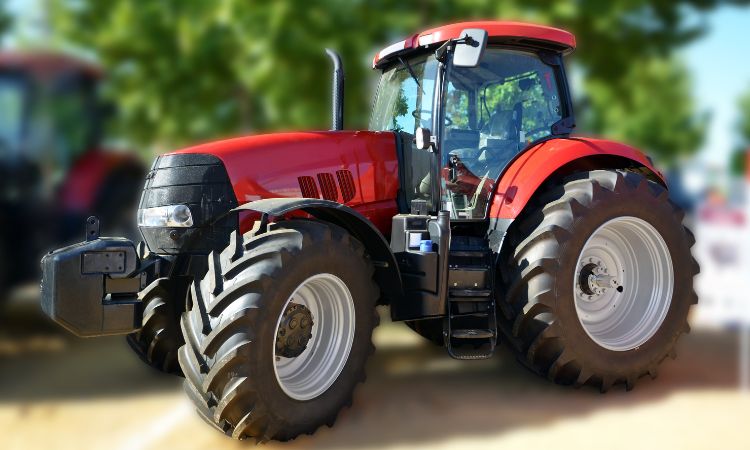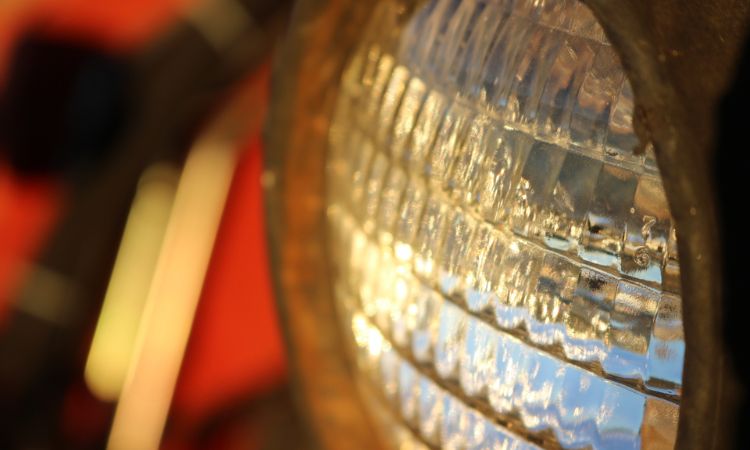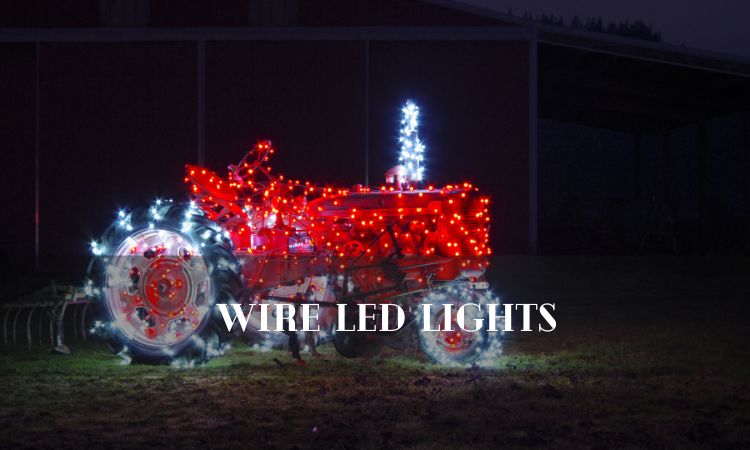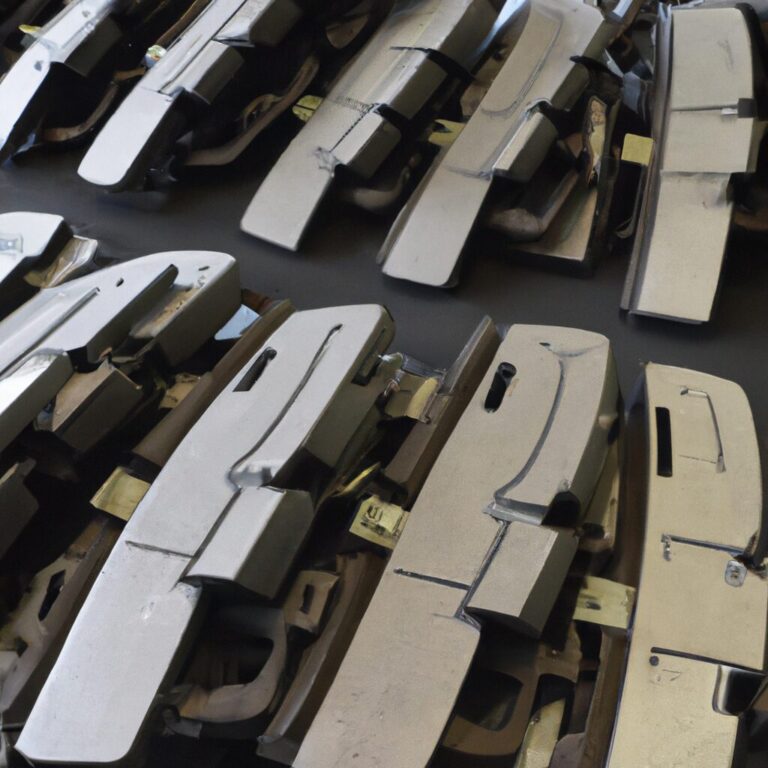How to Wire Led Lights on a Tractor – We Define Best 9 Steps
LED lights are becoming increasingly popular on tractors and other agricultural equipment. While they are more expensive than traditional incandescent bulbs, LED lights last much longer and use less energy. In addition, LED lights produce little heat, which can be a major advantage in hot, dusty environments.
There are a few things to keep in mind when wire LED lights on a tractor.
- Park the tractor in a well-ventilated area and disconnect the battery
- Remove the old light fixture, if necessary, by unscrewing it from the tractor
- Cut two pieces of wire long enough to reach from the battery to the light fixture location, plus an extra few inches
- Strip 1/2 inch of insulation off of each end of both wires using wire strippers
- Connect one wire to the positive terminal on the battery and the other wire to the negative terminal on the battery
- 5 Tape or solder each connection, then wrap electrical tape around each joint for added protection against weather and vibration
- If you are using quick-connect terminals, follow their instructions for installation instead of soldering or taping connections together
- Attach one end of each wire to its respective terminal on the new LED light (positive to positive, negative to negative)
- Most LED lights will have either alligator clips or ring terminals that can be used for this purpose

Wiring Diagram for Tractor Lights
If you’re a farmer or rancher, chances are you need to use tractor lights on a regular basis. And if you’re going to use them, you need to know how to wire them up correctly. That’s why we’ve put together this helpful blog post about wiring diagrams for tractor lights.
We’ll start by talking about the different types of tractor lights that are available. Then we’ll move on to discussing how to wire them up. We’ll also talk about some of the safety considerations that you should keep in mind when working with electricity.
So, whether you’re looking for information on how to wire up your own tractor lights or just want to learn more about the subject in general, read on!
Replacing Tractor Lights With Led
If you’re like most farmers, you rely on your tractor to get the job done. But over time, the lights on your tractor can start to wear out. That’s why more and more farmers are turning to LED lights as a replacement for their old tractor lights.
LEDs offer a number of benefits over traditional incandescent bulbs. They’re more durable, so they’ll last longer. They’re also more energy-efficient, which means they’ll save you money on your electric bill.
And because they produce less heat, they’re safer to use around combustible materials. Installing LED lights is a relatively simple process. You’ll just need to purchase the appropriate LEDs for your make and model of the tractor (be sure to consult your owner’s manual first).
Once you have the LEDs, remove the old bulbs from your tractor and insert the new ones in their place. Then, reconnect the wiring and you should be good to go! If you’re looking for an easy way to improve your tractor’s performance, replacing its old lights with LED equivalents is a great place to start.
7 Pin Tractor Plug Wiring Diagram
Most modern tractors come equipped with a 7-pin trailer connector. This is usually located on the rear of the tractor and provides an easy way to connect a trailer without having to mess around with wires and connectors. However, if your tractor does not have a 7-pin connector, you can easily wire one up yourself.
The first thing you’ll need to do is identify which wires go to which pins on the connector. You can do this by consulting your tractor’s owner’s manual or by using a multimeter to test the continuity between the various wires and pins. Once you know which wires go where it’s simply a matter of connecting them together.
If your tractor has an existing 4-pin connector, you can use that as a starting point for wiring up your new 7-pin connector. Simply connect the appropriate wires from the 4-pin connector to their corresponding pins on the 7-pin connector and you’re good to go! Whether you’re connecting a trailer to your tractor for work or play, having a functioning 7-pin connector is essential.
With just a little bit of time and effort, you can easily wire one up yourself – no matter what type of tractor you have.

Read: Tractor Tire Chans
Tractor Work Lights With Built in Switch
If you’re someone who spends a lot of time working on your tractor, you know how important it is to have a good light source. That’s why we’ve put together this blog post all about tractor work lights with built-in switches. These lights are essential for anyone who spends time working on their tractor, so read on to learn more!
There are a few different types of tractor work lights with built-in switches. The most popular type is the LED light bar. These Lights offer superior illumination and are very energy efficient.
They also tend to last longer than other types of bulbs, so you won’t have to replace them as often. Another type of tractor work light with built in switch is the halogen light. Halogen lights are less energy efficient than LED lights but they’re still quite bright.
They also don’t last as long as LED bulbs, so you’ll need to replace them more often. However, they’re usually less expensive than LED bulbs so they may be a good option if you’re on a budget. Finally, there are incandescent work lights with built in switch.
These offer the least amount of illumination but they’re also the least expensive option. If you don’t need a lot of light for your tractor project, an incandescent bulb may be all you need.
Diy Tractor Lights
If you’re a tractor owner, then you know how important it is to have proper lighting. Not only does it help you see while you’re working, but it also makes your tractor more visible to others. Fortunately, there are a number of ways that you can improve the lighting on your tractor.
One option is to install LED lights. These are becoming increasingly popular because they use less power than traditional incandescent bulbs and they last much longer. You can also add reflectors to your lights to make them even more effective.
Another option is to install light bars. These are especially useful if you do a lot of night work on your tractor. Whatever route you choose, make sure that you take the time to improve the lighting on your tractor so that you can stay safe and be as productive as possible.

Credit: blackfieldfarm.com
How Do You Hook Up Led Lights to a Tractor?
There are a few things you need to know before hooking up LED lights on your tractor. The first is that LEDs run on direct current (DC), while most tractors operate on alternating current (AC). This means that you’ll need a power converter to change the AC from your tractor into DC for the LEDs.
You can find these power converters at most electronics stores. The second thing you need to know is what voltage your tractor’s electrical system is. Most LED lights will run on 12 volts, so if your tractor’s electrical system is 24 volts, you’ll need two of these power converters (or one that converts 24 volts into 12).
Once you have the proper converter, simply wire the positive and negative leads from the converter to the positive and negative leads on the LED light (making sure not to mix them up!). Now it’s time to mount the light. Many LED lights come with brackets that make this easy, but if yours doesn’t, you can improvise with zip ties or other materials.
Just make sure that the light is securely mounted so it won’t shake loose while you’re driving. Finally, turn on your tractor and test out your new LED light! Be sure to dim it down low at first until you get a feel for how bright it is; remember, LEDs are much brighter than traditional bulbs so they can be blinding if not used properly.
What are the 3 Wires on Led Headlights?
LED headlights are becoming more and more popular in cars and trucks. They are much brighter than traditional halogen headlights, and they use less energy. One of the things that makes them so efficient is that they only have three wires.
The first wire is the positive lead, which goes to the anode of the LED. The second wire is the negative lead, which goes to the cathode of the LED. The third wire is called the ground wire, which goes to a metal plate or other object that can act as a good electrical conductor.
When all three of these wires are connected properly, electricity can flow through the circuit and power up the LED light. This process is called “forward biasing” because current flows from the positive lead to the negative lead through the LED lightbulb. This creates an electric field across the semiconductor material inside the LED, and this field causes electrons to flow freely through the material.
As they flow, they emit photons, which we see as light!
How Do You Wire 12 Volt Led Lights?
Assuming you would like a step-by-step guide on how to wire 12 volt LED lights: 1. Gather your materials. For this project, you will need LED light bulbs, a 12 volt power source, electrical tape, wire strippers, and scissors.
2. Cut the wires to the correct length. You will want to leave about an inch of wire on either end of the bulb so that you can easily attach it to the power source. Use wire strippers or scissors to strip away any protective coating on the wires.
3. Connect the positive wire from the power source to the positive (longer) lead on the LED bulb using electrical tape or solder. Repeat for negative wires. If using electrical tape, be sure to wrap the connections securely several times for a good connection.
4. Attach the LED light bulbs to whatever surface you wish them to illuminate and turn on your power source!
How Do You Wire Flashing Lights on a Tractor?
Most people are familiar with the standard headlights that are found on cars and trucks. But, did you know that there are also specialty lights that can be used on a tractor? These are called flashing lights, and they serve an important purpose.
Flashing lights are typically used to indicate to other drivers when the tractor is backing up. This is important because it allows drivers in other vehicles to know when they need to use extra caution. In some cases, the law even requires that tractors have these types of lights installed.
So, how do you wire flashing lights on a tractor? The process is actually quite simple. First, you’ll need to purchase the appropriate light fixtures from a hardware or automotive store.
Next, use wire cutters to strip about ½ inch of insulation off of each end of the wires that will connect the light fixture to the power source. Once the wires are prepped, twist each one around a connector (or use solder) and then screw on a nut to secure it in place. Repeat this process for all of the connections between the light fixtures and wires.
Finally, route the wires so they’re not in danger of being damaged by moving parts on the tractor, and then test out your new system!
How to – Wire LED Work Lights (Light Bar) on Tractor
Conclusion
If you’re looking to add some extra light to your tractor, wiring LED lights is a great option. LEDs are much more efficient than traditional incandescent bulbs, so they’ll save you energy and money in the long run. Plus, they’re much brighter, so you’ll be able to see better when working at night.
Here’s how to wire LED lights on a tractor: 1. Start by disconnecting the battery. This will ensure that you don’t accidentally short-circuit anything while working.
2. Next, remove the old incandescent bulbs from the sockets. If there are any wires attached to them, cut them off and discard them. 3. Now it’s time to install the new LED lights.
First, twist each light into its socket clockwise until it’s tight. Then, connect the positive (red) wire of each light to the positive terminal of the battery using a quick-connector or solderless connector. Finally, connect the negative (black) wire of each light to one of the ground terminals on the battery using another quick-connector or solderless connector.
Make sure that all connections are secure before reconnecting the battery!


